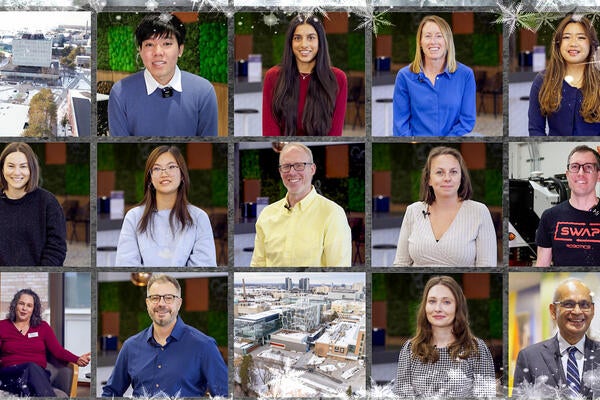
Sounding the alarm: rates still dropping for women in computing
Waterloo professor to speak about women in computer science at the International Women’s Day event on campus

Waterloo professor to speak about women in computer science at the International Women’s Day event on campus
By Cherri Greeno Marketing and Strategic CommunicationsIn a perfect world, computer science Professor Jo Atlee would like to glance around her classroom and see an even mixture of male and female students.
“It's not an impossible goal to reach,” says Atlee, a professor in Waterloo’s Cheriton School of Computer Science. “But it will take time, considering the low number of women enrolling in computer software programs and those working in the field.”

Photo credit: monkeybusinessimages/iStock/Thinkstock
In the 1980s, Atlee says the number of women enrolled in university computer science programs was generally high – making up 35 to 40 per cent of computer science graduates in Canada and the United States.
However, these percentages soon started to fall and, today, are a little more than half of what they were in the 1980s.
Atlee will speak on the issue of women in computing in her keynote presentation at the University of Waterloo's International Women's Day Dinner on Friday March 6.
Atlee says there are many possible reasons for the drop off in interest from young women, including the fact that home computers were initially marketed almost exclusively to men and boys with computer games and had little appeal to women and girls.

computer science Professor Jo Atlee
“Some women are scared and feel they are behind because they don't have any computing experience,” says Atlee.
However, she says, female students today are getting much more experience with computers than they used to and programs at the university are aimed at teaching those who have little or no experience.
Once women get involved in the program they see they have the aptitude to succeed, she says.
At the University of Waterloo, the Women in Computer Science (WICS) group provides events, information and support for women in the program. Last month, high school students were invited to campus for Go-Code-Girl, an event to introduce young women to career opportunities in the computing and engineering fields.
However, another issue arising from her research shows that retaining women in such a demanding field can be tough. Many quit because the work conditions are too extreme or because of the gender imbalance.
“Sometimes it's a joke here, a slight here, feeling excluded from things the men are doing.....sometimes the slights add up and eventually some slight becomes the last straw,” Atlee says.
And while the percentage of women in the software industry is low, Atlee, who remains hopeful, says the percentage of ethnic minorities in technical leadership positions is even lower.
There are more programs aimed at teaching young girls the benefits of computer science, more activities at the university level in which female students teach each other about new technologies and more companies realizing the need for diversity in their work place.
“Software companies have a wide customer base and are producing software for the world,” Atlee says. “They are realizing they need a diverse workforce to understand their diverse customer base.”

Read more
Here are the people and events behind some of this year’s most compelling Waterloo stories

Read more
A closer look at the University of Waterloo’s beloved network of pedestrian tunnels and bridges

Read more
A winter holiday message from President Vivek Goel
The University of Waterloo acknowledges that much of our work takes place on the traditional territory of the Neutral, Anishinaabeg, and Haudenosaunee peoples. Our main campus is situated on the Haldimand Tract, the land granted to the Six Nations that includes six miles on each side of the Grand River. Our active work toward reconciliation takes place across our campuses through research, learning, teaching, and community building, and is co-ordinated within the Office of Indigenous Relations.